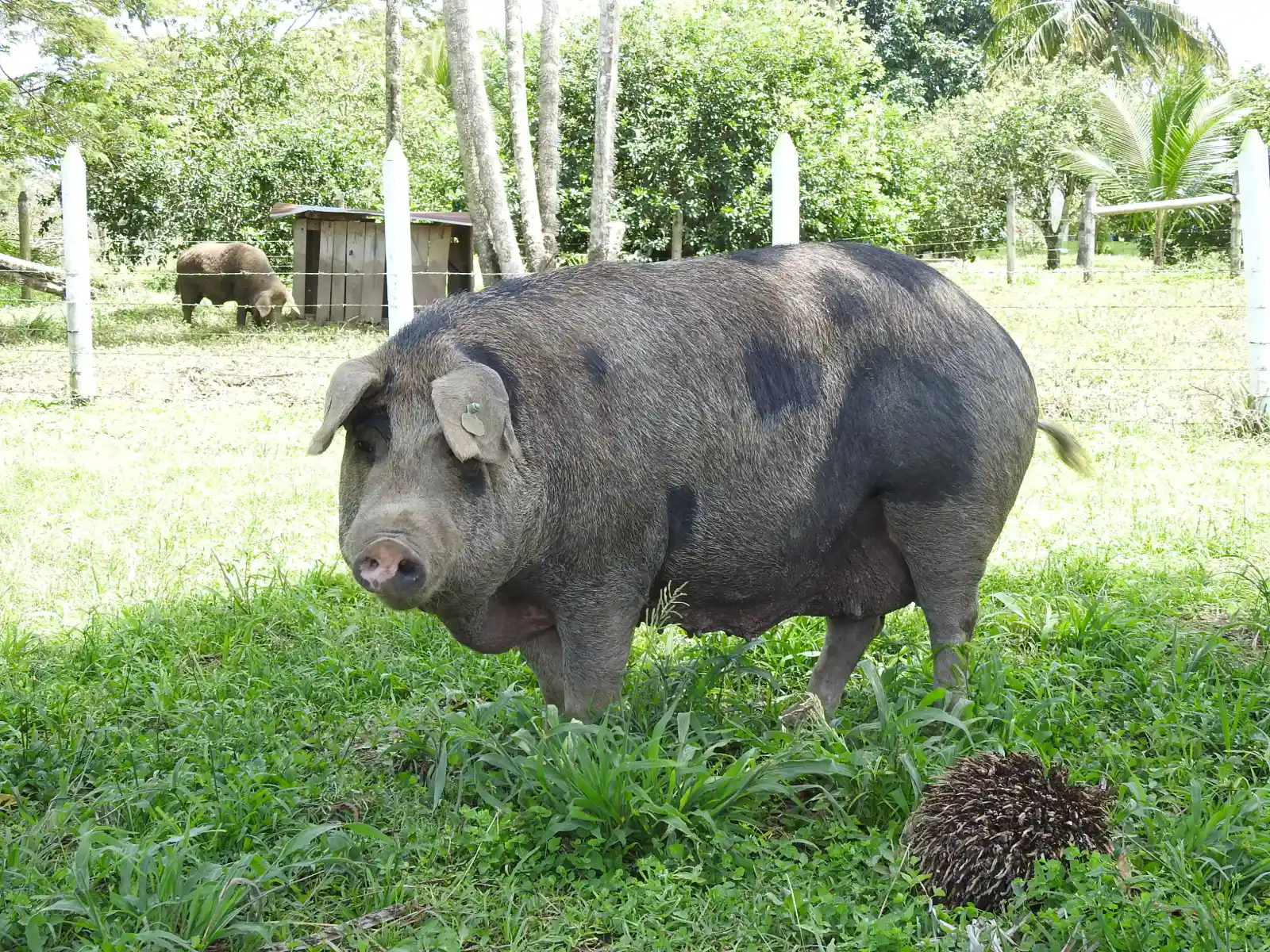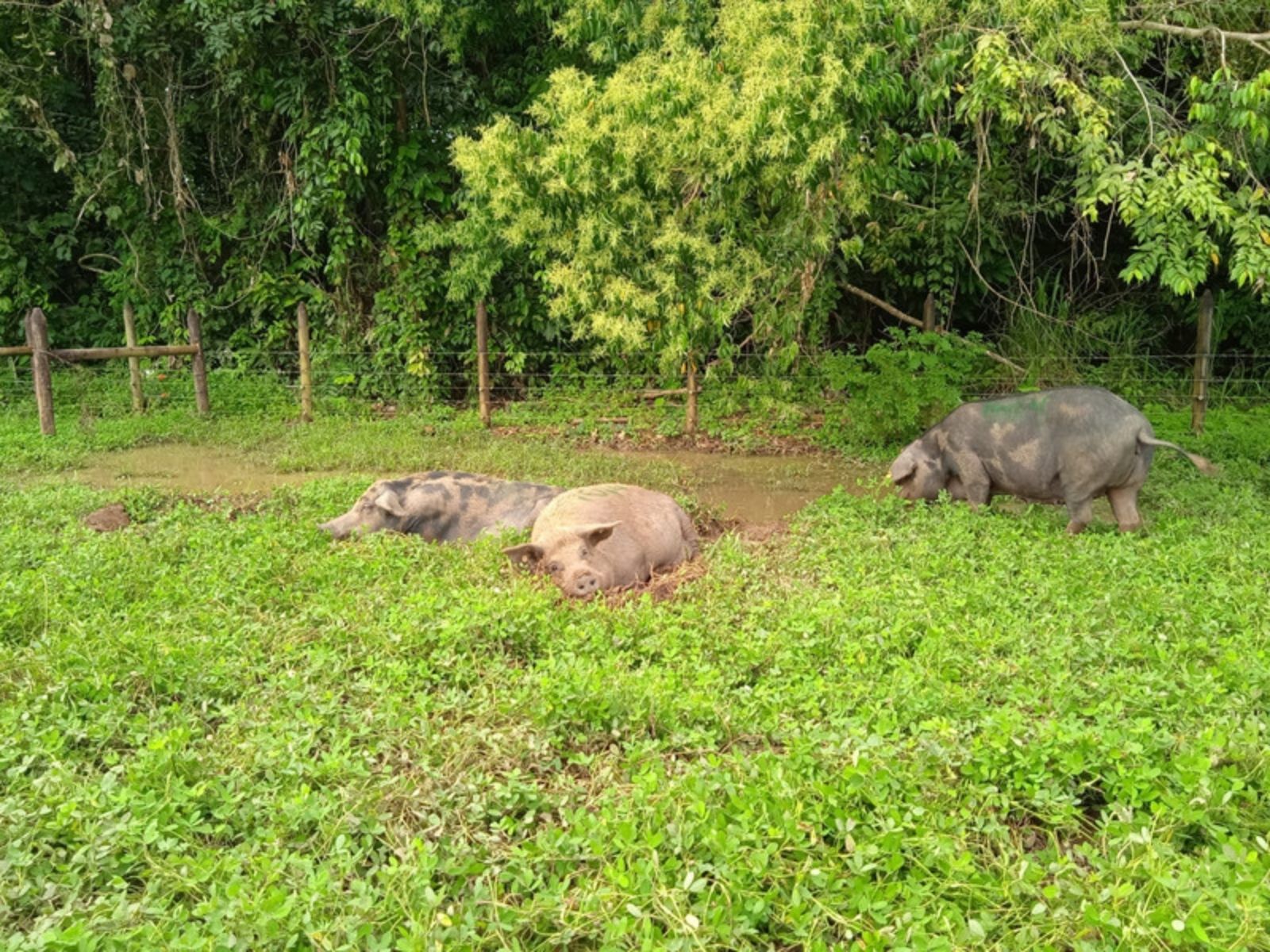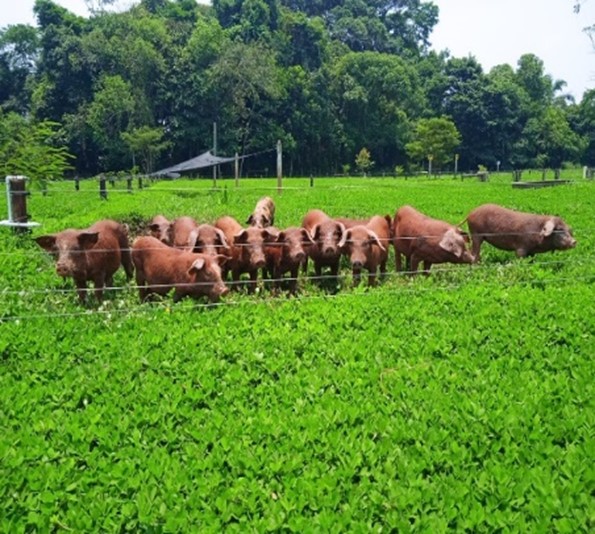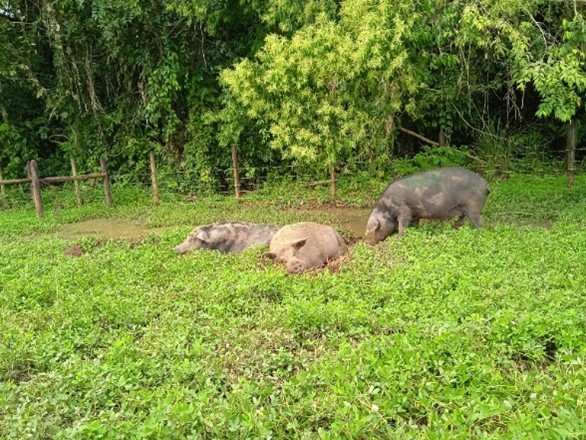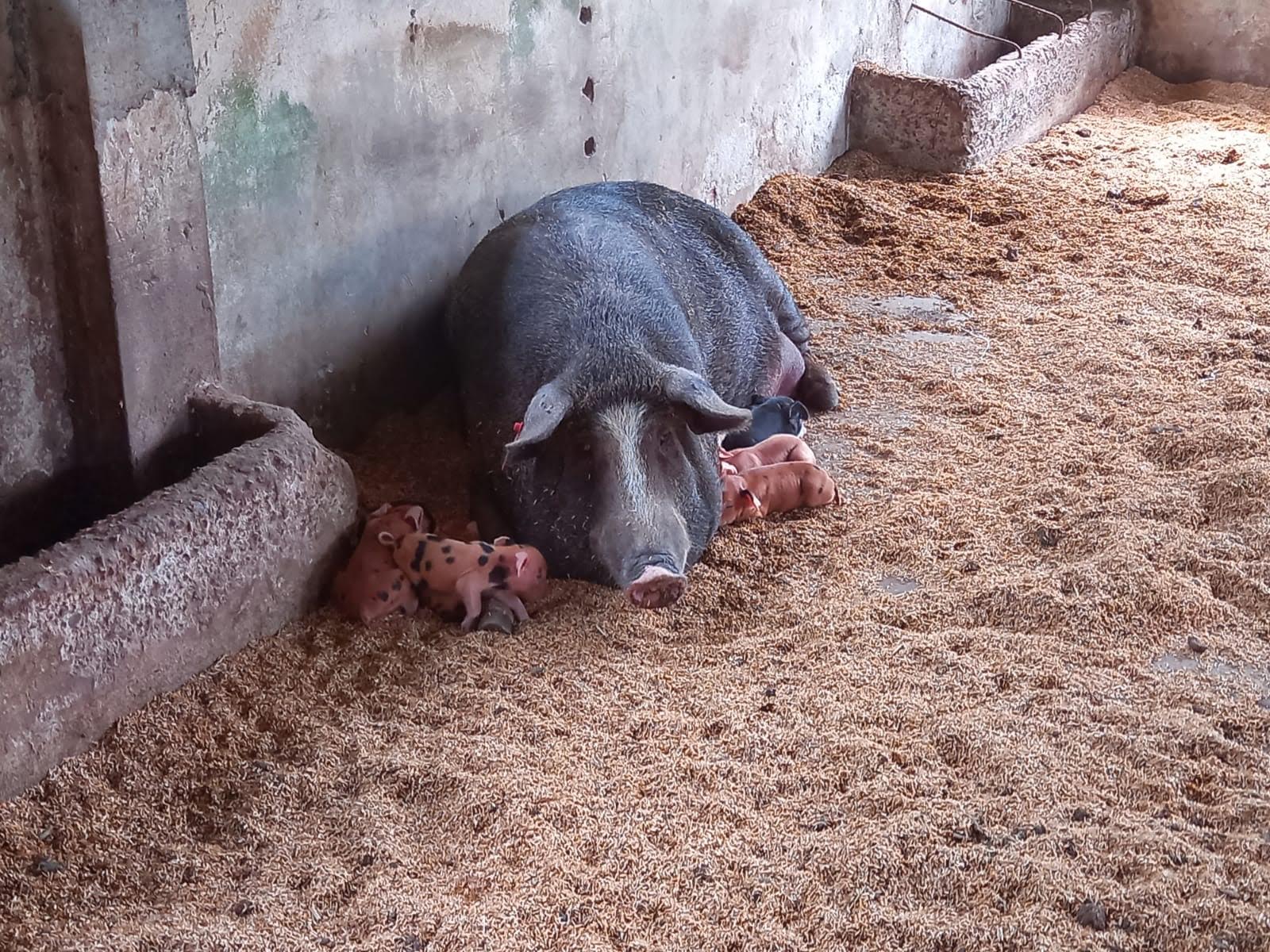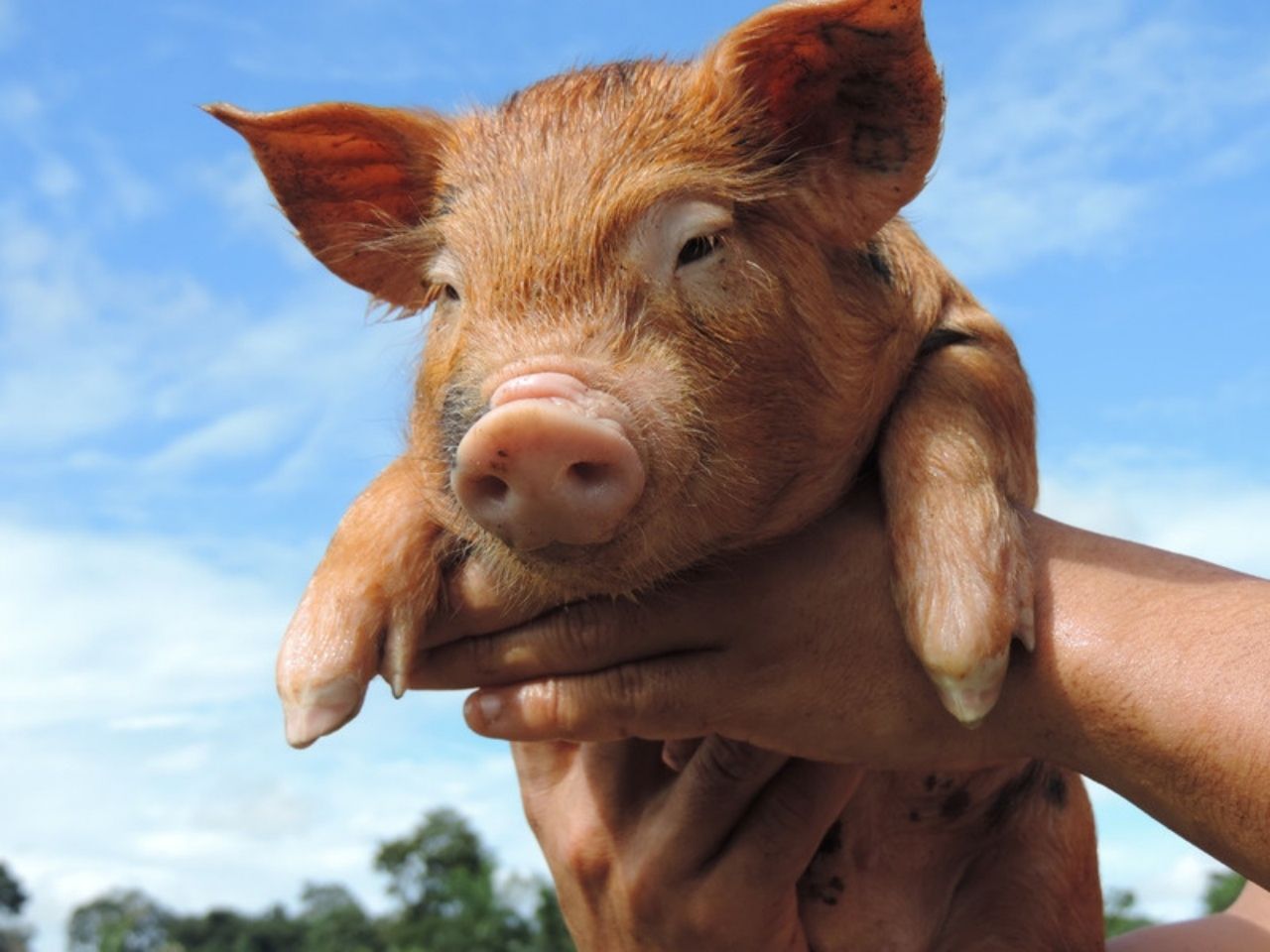Handling and use of breeding stock for weaned piglets of the Casco de Mula breed

- Productive system:
- Pork meat
- Geographic coverage:
-
Orinoquia region
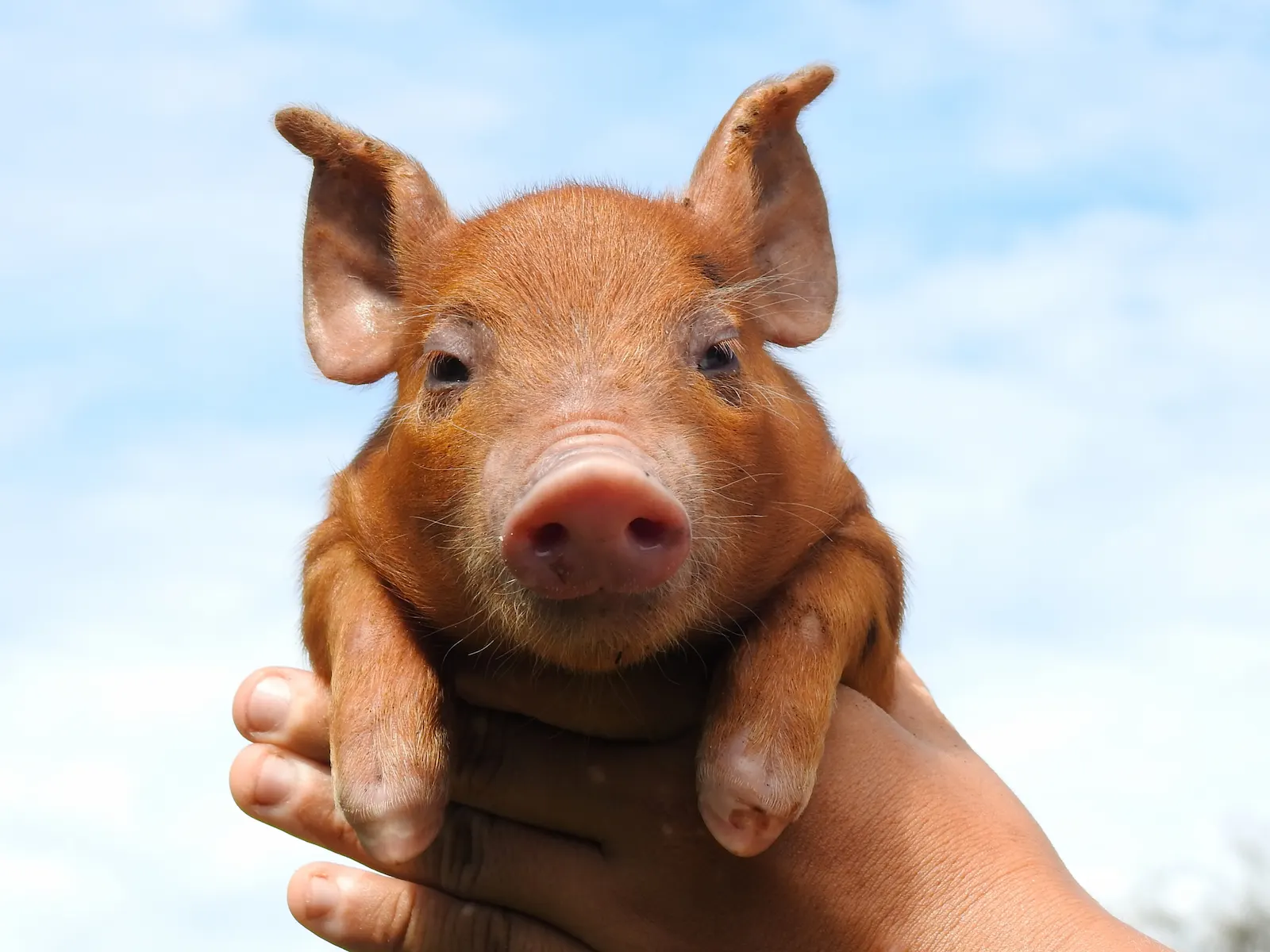
Description
An alternative to traditional pig production is the use of a native or locally adapted breed with rusticity characteristics and adaptation to the environmental conditions of the Orinoquia region, which can be fed with alternative sources to the use of commercial concentrates, reducing production costs and guaranteeing food security for rural communities.
As a pure breed, the nucleus can be oriented towards outdoor breeding and meat production in grazing systems and supplementation with forage banks since the phenotypic characteristics of the animals allow them to withstand temperatures typical of the region, solar radiation due to their dark skin, and rainfall in open fields.
This breed is 90% resistant to foot-and-mouth disease. Females have good maternal ability and are protective of their offspring so they can have litters without the need for farrowing cages or artificial lighting in outdoor conditions. They have a reproductive life of 3 years, 2 births are offered per year, and they reproduce at an early age, generating around 6 to 7 births. The average litter size is 8.25 piglets (a suitable size for breeding management in small productions). Males have an average seminal volume of 144 milliliters, masal motility of 76%, progressive motility of 72%, concentration of 458 million spermatozoa per milliliter, and viability of 72%, which classifies this breed as having optimal reproductive characteristics for use both in natural mating and in artificial insemination with fresh semen.
Casco de Mula pigs require two doses of gastrointestinal deworming per year (one every six months), so antiparasitics are not used frequently. Piglets do not require intramuscular iron application, antibiotics, or probiotics for their development.
As breeders for crossbreeding, these animals provide genetic variability with resistance attributes and have the highest meat production compared to commercial breeds.
The Casco de Mula breed for ham production has an attractive color and has received an average acceptance rate of 80%. It has a very pleasant aroma, with an average acceptance rate of 68%, and a pleasant and captivating flavor, with an average acceptance rate of 77%.
The Casco de Mula pig breed has been declared a national heritage because it is autonomous and wild and has few animals worldwide.
Audiovisual content
Banco de germoplasma animal porcino Cerdo Casco de Mula - Centro de Investigación La Libertad [Spanish]
Cerdo Casco de Mula - TvAgro por Juan Gonzalo Angel [Spanish]
El Cerdo Criollo Casco de Mula Travesía Agropecuaria [Spanish]
AGROSAVIA La Libertad Cerdo casco de mula [Spanish]
Características y transformación de la carne del cerdo criollo casco de mula [Spanish]
Elaboración del cabano con carne de cerdo Casco de mula [Spanish]
Image gallery

